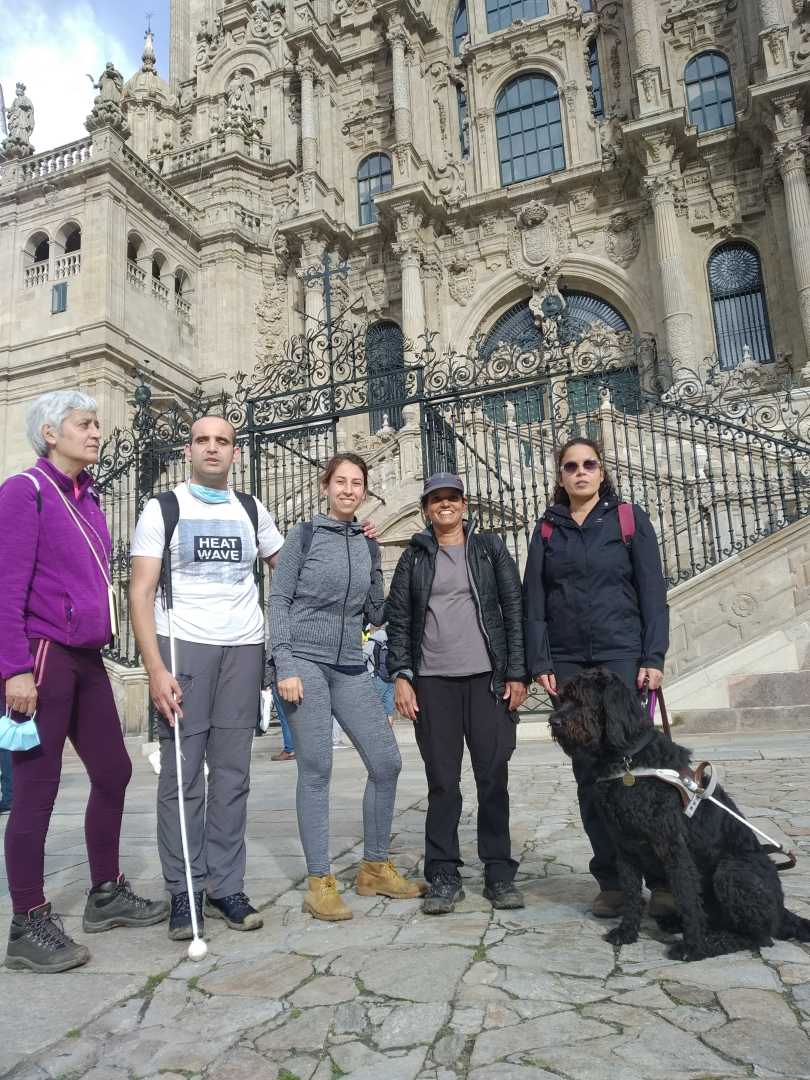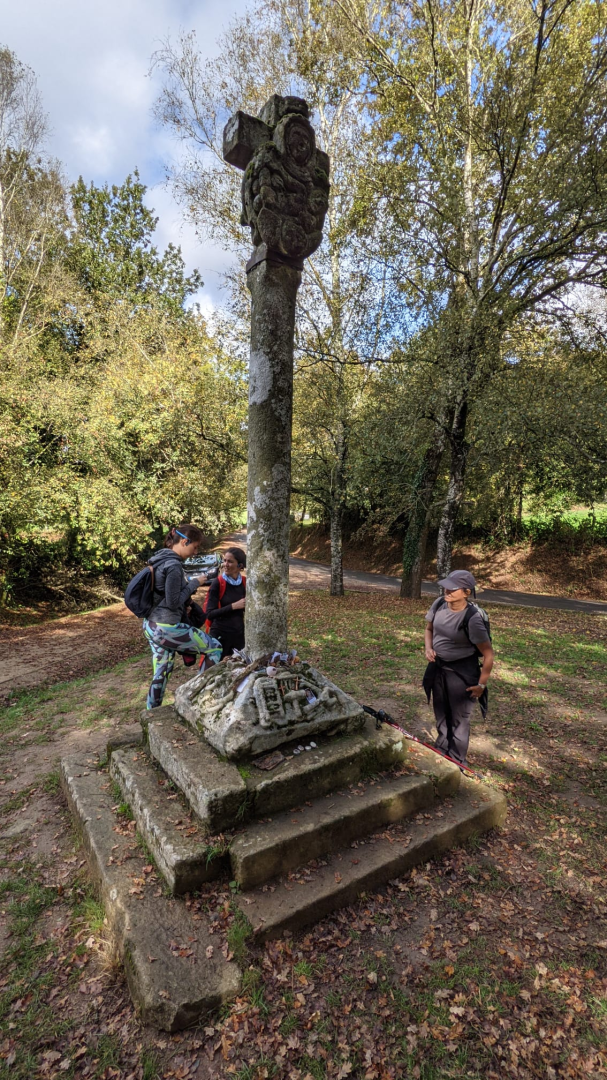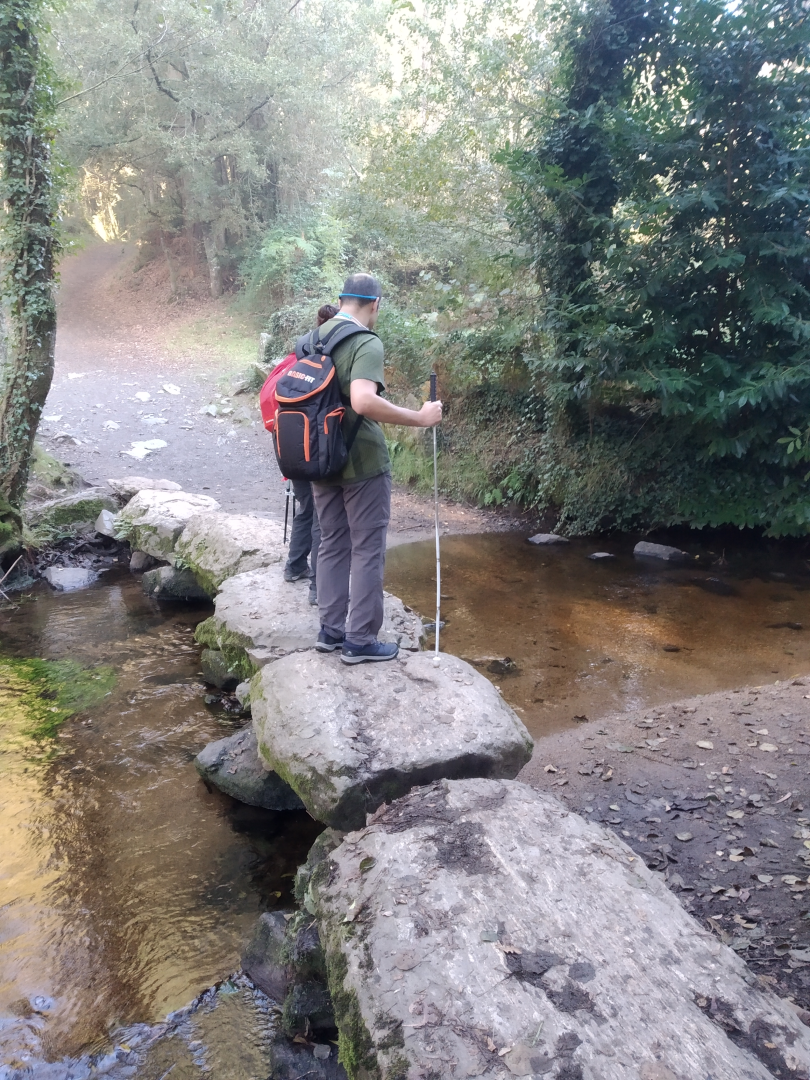Accessible way of Saint James
Basic information
Project Title
Full project title
Category
Project Description
Thanks to the Accessible Way of Saint James project, pilgrims with disabilities will be able to walk the Way of Saint James in a more independent way. The contents of the project's website and the accessible applications will provide the necessary resources for this. The website contains information to prepare the way, information on accessibility and accessible resources, as well as a section on accessible technologies, which contains support apps: IGN, Blind Explorer and Soundscape.
Geographical Scope
Project Region
Urban or rural issues
Physical or other transformations
EU Programme or fund
Which funds
Description of the project
Summary
It is conceivable that many of the pilgrims are people with different abilities and needs. For this reason, it is vital that this historical-artistic and cultural heritage, declared a World Heritage Site, has an infrastructure and services that allow everyone to enjoy it, eliminating all barriers that prevent everyone from doing so under equal conditions.
The main objective of the project is to carry out actions that cover public spaces, buildings and virtual spaces, to make the Camino Frances de Santiago accessible, turning it into a more inclusive, interactive and playful activity for all its visitors, regardless of their functional abilities, and promoting Accessible Tourism.
The accessibility will come from the existence of a website where it will contain:
- The website itself: a space in which visitors are provided with the objectives of the site, as well as information and justification for the project and a description of the activities of the ONCE Foundation.
- Space "Prepare your experience": where practical advice is provided so that future pilgrims can successfully prepare the experience.
- Accessible technologies: provides information on the accessibility of the different technologies.
- Stage accessibility: section from which the web user can search for a stage and receive a file with information on its accessibility.
- Accessibility of points of interest: section from which a search engine for points of interest
- Community of pilgrims
In the accessible technologies section there are three applications:
- IGN helps you to prepare the trip, what to put in the backpack, the difficulty of the route, the weather....
- Blind Explorer, a 3D sound-based orientation app for rural roads.
- Soundscape guides you through the towns and villages you pass through, where to eat, where to sleep, pharmacies, etc. also using 3D sound.
In this way the Camino de Santiago is inclusive and supported by accessible apps, it can be done by everyone.
Key objectives for sustainability
The sustainability of the project is approached from two points of view.
The first is from the point of view of non-pollution in the development of the activity, since the Way of St. James has to be done on foot, on horseback or by bicycle, activities that do not generate emissions of polluting gases.
On the other hand, from the point of view of the circular economy and the development of the rural areas along the route. The influx of pilgrims makes it necessary to provide services along the entire route. This means the generation of employment, the development of facilities and services (accommodation, restaurants, supply and specialised shops, such as pharmacies, sports shops, etc.) in the towns through which it passes. Being located in rural areas also favours the use of products generated in the surrounding area (local agricultural and livestock products).
All of the above leads us to confirm that the project is sustainable.
Key objectives for aesthetics and quality
The Way of Saint James was declared the First European Itinerary of Cultural Interest by the Council of Europe in 1987. In addition, the route has been considered a World Heritage Site by UNESCO since 1993.
Although the project does not generate any intervention on the existing environment, the Way of St. James is one of the most important cultural routes in Medieval Europe.
This project highlights the value of this heritage. It makes its beauty visible, not only in cities, but also in rural areas and lesser-known villages, where the integration between heritage and nature is more evident.
Key objectives for inclusion
The main motivation for this project is accessibility. To allow people with disabilities to walk the Camino de Santiago as independently as possible. This means achieving the goal of inclusion and equal opportunities. The Camino may still have obstacles and barriers, but the project offers alternatives so that people with disabilities can choose the route that suits them best. In addition, the 3D sound guidance system will allow blind people to walk the route without the need for a companion.
The design of the project has taken into account the experiences of users in order to detect problems, needs and improvements when setting it up. The end users are the ones who really show if the project is well carried out.
All the apps and the website itself follow universal design criteria so that they can be used by all people regardless of their abilities.
The website offers updated information on all the accessible resources of the Way, allowing people to design their own itinerary according to their abilities, needs and budget.
Results in relation to category
The Accessible Pilgrims' Route to Santiago project contributes to the generation of belonging.
Many of the localities or villages through which it passes do not disappear thanks to the Way. Pilgrims contribute to their economic development. The fact that it is accessible allows a greater number of pilgrims who otherwise would not do it.
Pilgrims contribute, but also receive from the environment they visit, they connect with heritage, culture and artistic manifestations.
There is a connection in both directions.
At the moment there are no results of the project, as it has just been implemented, but the user tests carried out during the development phase indicate that it is on the right track, because it responds to all their indications, recommendations and needs. This will mean a significant increase in the number of pilgrims from groups of people with disabilities.
How Citizens benefit
As mentioned above, the involvement of end-users has been fundamental to the development of the project. It could not be implemented without taking into consideration their needs and recommendations. If a product or service has to take into account universal design so that it can be used by everyone, it cannot fail to take into account the opinion and involvement of those who are going to use or enjoy it. Both the web and the applications must be usable by everyone and their feedback is essential.
Physical or other transformations
Innovative character
In order to make the Camino de Santiago accessible to people with disabilities, a 3D sound guidance system is used. This type of technology is not commonly used in guidance applications in the natural environment, hence the innovation it brings to the project.
The project itself is an innovation in the traditional concept of guidance systems for people with disabilities, as the geolocation of a route that extends over 1200 km has never been carried out before.
In addition, the project brings together all the information on the accessibility of the Camino and its related resources in a single place, designed under the premises of design for all people. This facilitates the realization of the Camino, from its preparation to the development of the stages.
Learning transferred to other parties
The project can be replicated in any cultural or natural itinerary, to be traveled on foot or by bicycle, with associated services (lodging, restaurants, stores, etc.). The applications used are available free of charge for mobile devices, both IOS and Android.
The development of the project consists of 4 different phases:
- Preliminary analysis of the route and points of the environment. The route of each of the stages and the points of interest from which the final digital contents were generated throughout the Camino de Santiago have been identified. The identification of the routes and points of interest was carried out considering the available digital information of the routes, considering additionally specific criteria that guarantee the accuracy and quality of the contents and the security of the users that can use such information.
- Field work. For each stage, a digital field survey of the precise layout of the route and the surrounding points has been carried out. In both cases the digital contents were generated using topographic equipment and specific procedures. This was completed with laboratory analysis of the data obtained to evaluate the quality of the digital information obtained.
- Generation and validation of the digital contents. The digital files have been developed based on standard formats of open use, which will contain the geographic and descriptive information of the route and points of the environment of the French Way of St. James in its entirety. In this way, the digital contents associated with each of the routes, Information Points and Points of Interest have been developed.
- Evaluation of accessibility conditions. On the one hand, an evaluation of the accessibility conditions of the different tourist resources and, on the other hand, of the contents of the applications and the website is carried out. In addition, the accessibility of the applications and the web has been analyzed.



